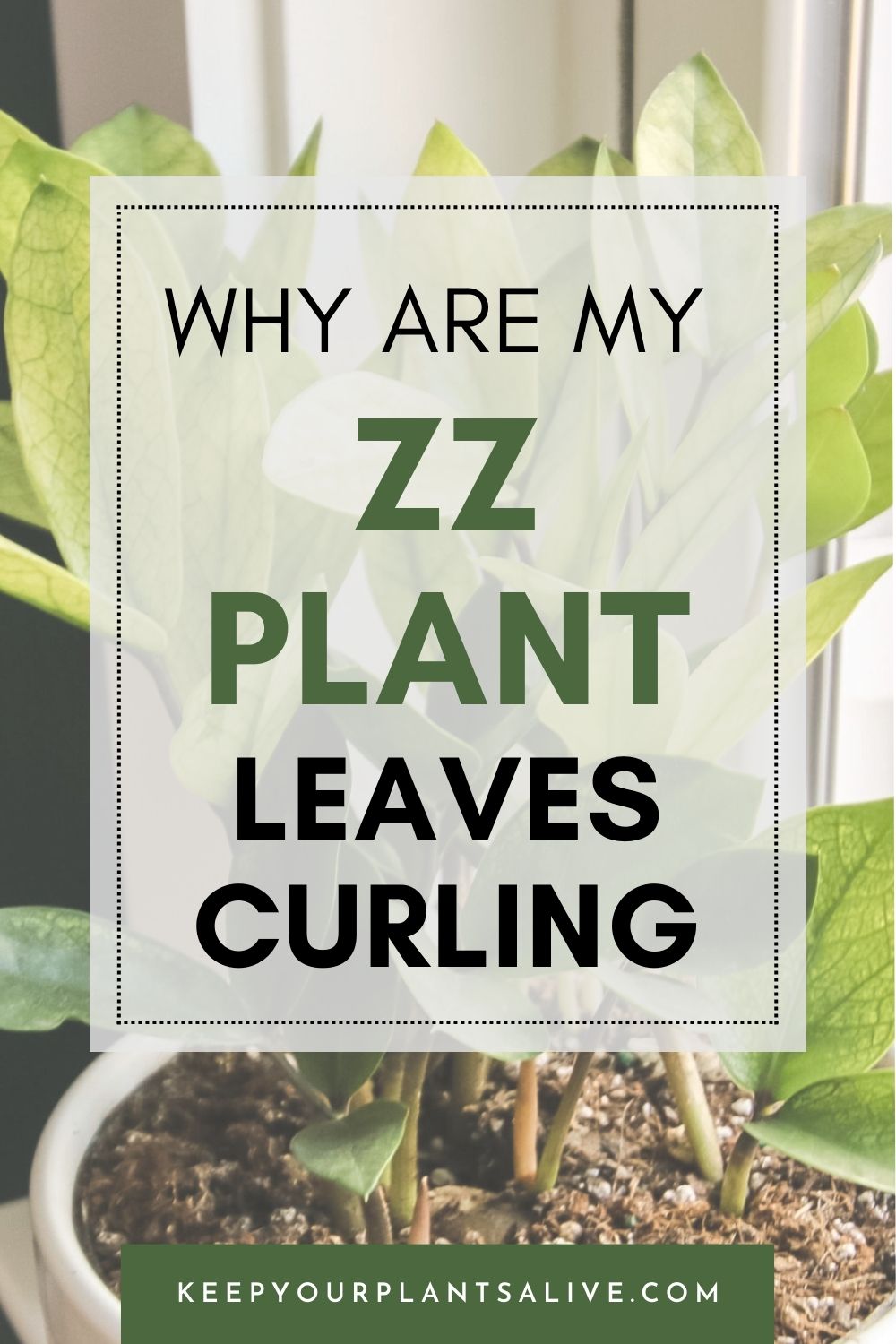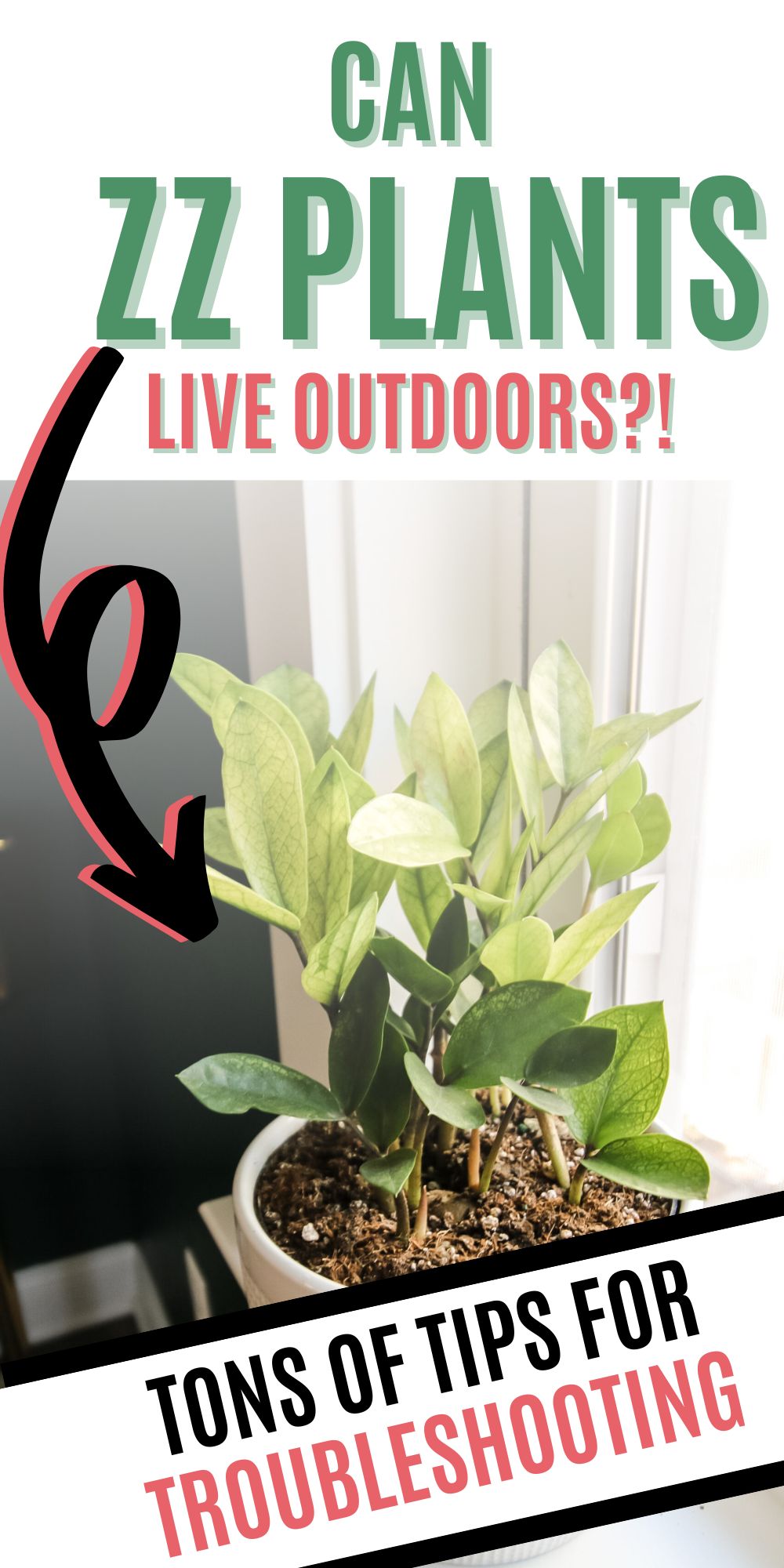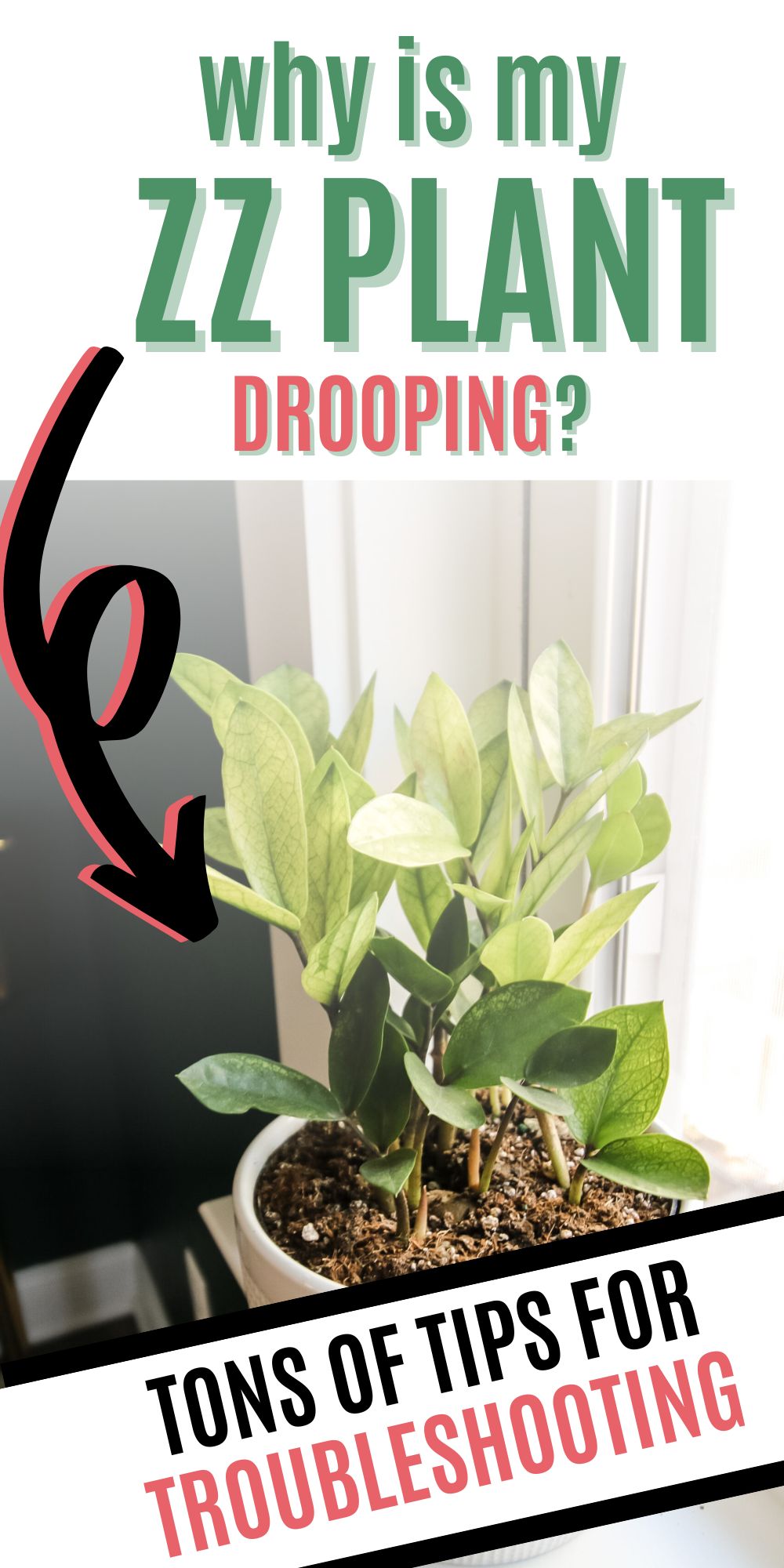Wondering why your ZZ Plant is turning brown when it's supposed to be an easy care plant? Here are the top causes of brown leaves on a ZZ plant and how to fix them!
ZZ plants are beautiful, easy care house plants. They are often at the top of lists of easiest to care for house plants, in fact.
However, even easy plants can have problems.
If your ZZ plant is turning brown, don't beat yourself up. As long as the whole plant isn't brown and crispy yet, you still have a chance to save it.
Consider this the time to try to listen to your plan and adjust its conditions to give it what it wants and needs to thrive.
Let's talk about the top causes of your ZZ plant turning brown, and how to fix them!

Want more ZZ plant topics?
- Raven ZZ plant care guide
- The Best ZZ Plant Soil
- Why is my ZZ plant getting yellow leaves?
- Why is my ZZ plant not growing?
- Why is my ZZ plant turning brown?
Free printable ZZ plant care guide
Join the (free!) KeepYourPlantsAlive+ community to access this exclusive printable plant care guide! Once you sign up, you can right click & save the JPG care guide. Or keep scrolling for more!
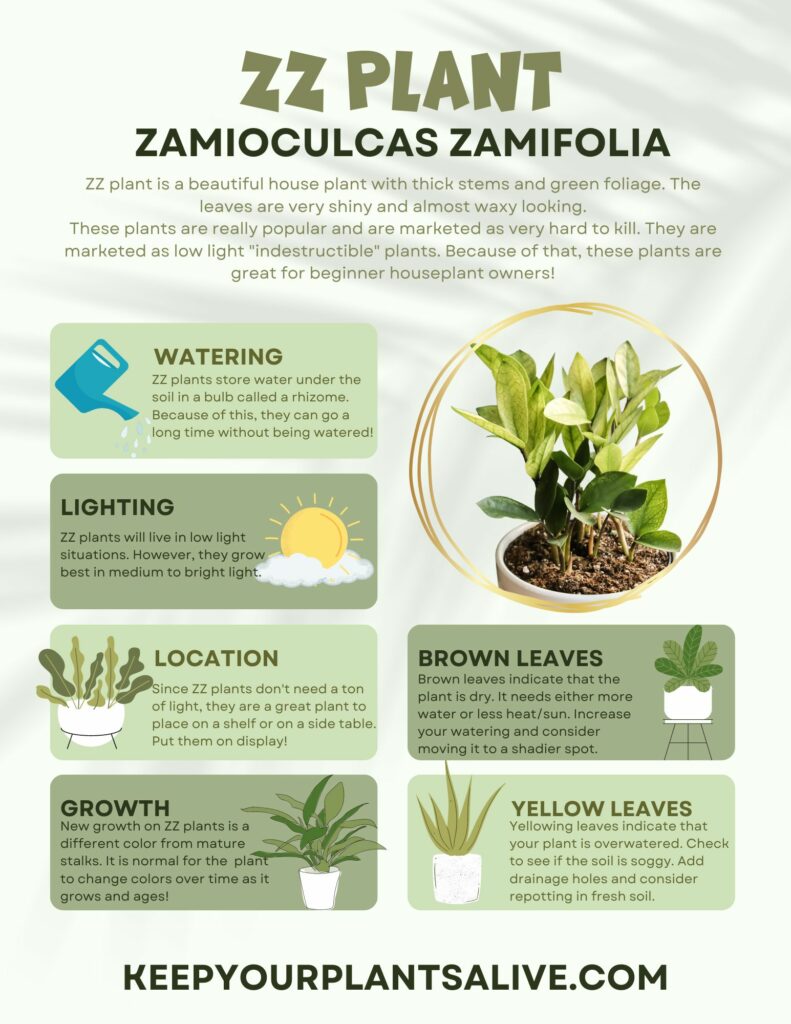
Why is my ZZ plant turning brown?
The first thing that I want to discuss is that there are two different kinds of brown leaves on house plants:
- brown, crispy, dry leaves
- brown/black, mushy, wet leaves
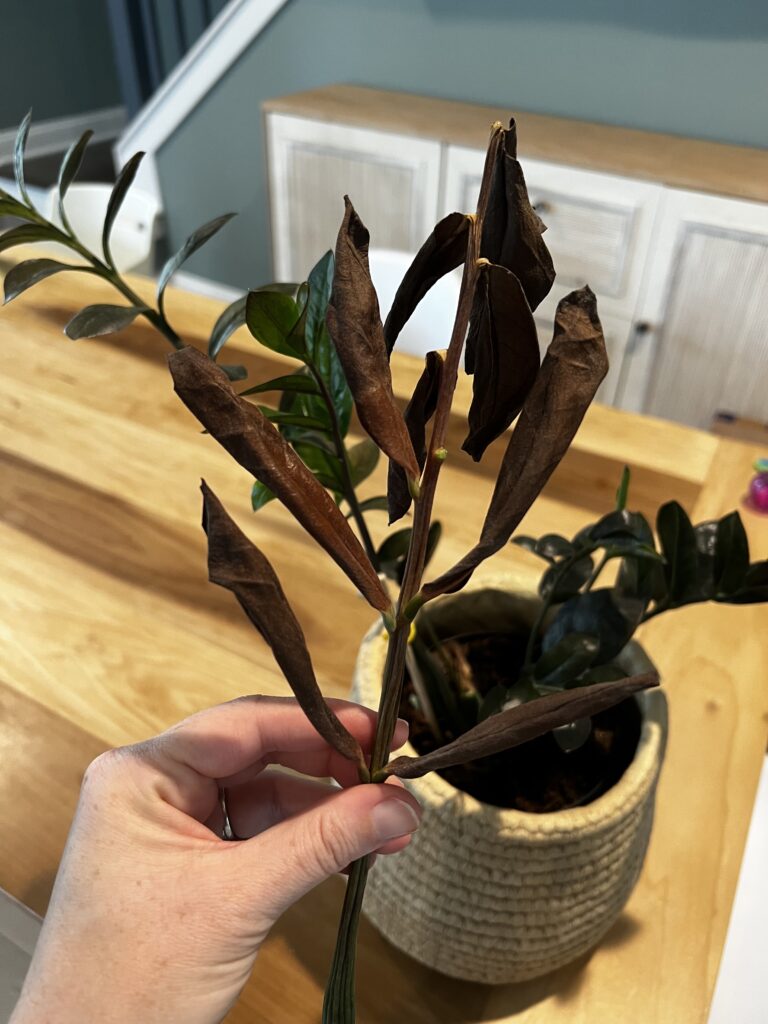
Brown + crispy leaves
Crispy leaves indicate that your plant is dry. This could mean it is under watered or getting too much light or heat. Either way, it needs some adjusting.
Make sure that your plant is in bright, indirect light, as direct sunlight will burn its leaves.
Be sure that it is not directly in front of a vent blowing heat or air conditioning on the plant, which can dry out the soil super quickly.
And finally, make sure you are watering it frequently enough. All these plants do not need to be watered even weekly, they will dry out in soil that is super dry, especially if it has gotten compact and hard.
If this is the case, it's better to repot your ZZ plant and fresh soil and revise your watering schedule to help make it happy again.
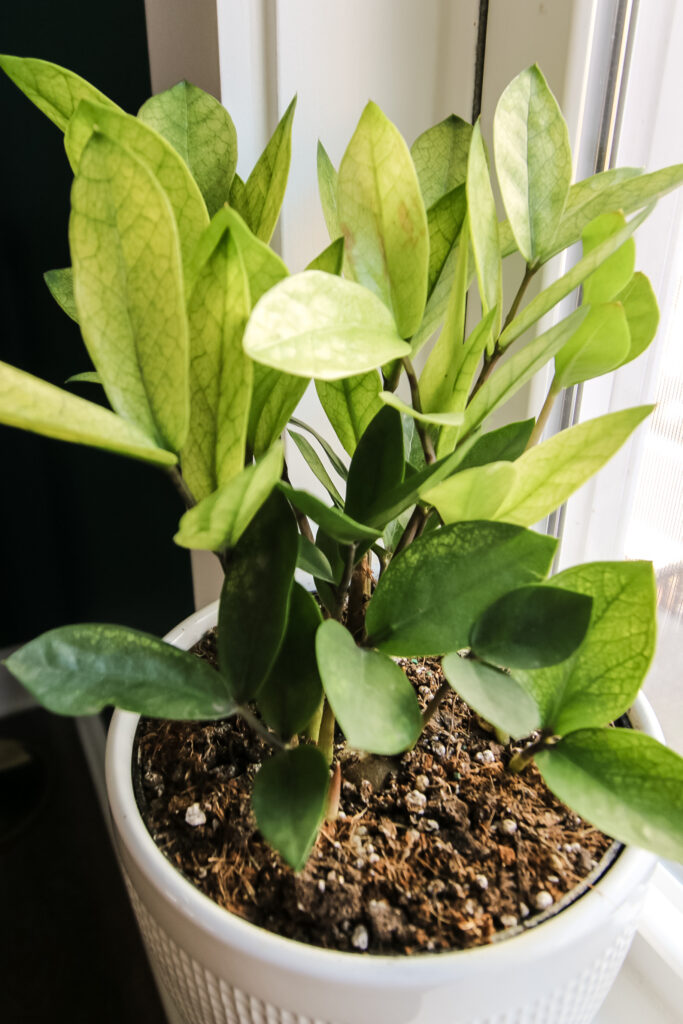
Brown and mushy leaves
Mushy leaves indicate that your plant is overwatered. They will often turn very dark brown almost black, and are essentially rotten.
Check your soil – does it feel wet to the touch? This is too wet for a ZZ plant. You can read my guide here about how to dry out super soggy soil, but usually it's best to just repot your plant in fresh soil at this point.
Also make sure that your pot has drainage holes so that water cannot pool in the pot. If it has a drip tray, make sure that you were emptying that if it is filling up after a watering.
Also, be careful if your plant is getting misted or watered from above. Even a few drops of water pooling on the leaves of your plant can lead to rot, especially if the plant does not get a lot of bright light.
For this reason, it might be better to bottom water your ZZ plant!
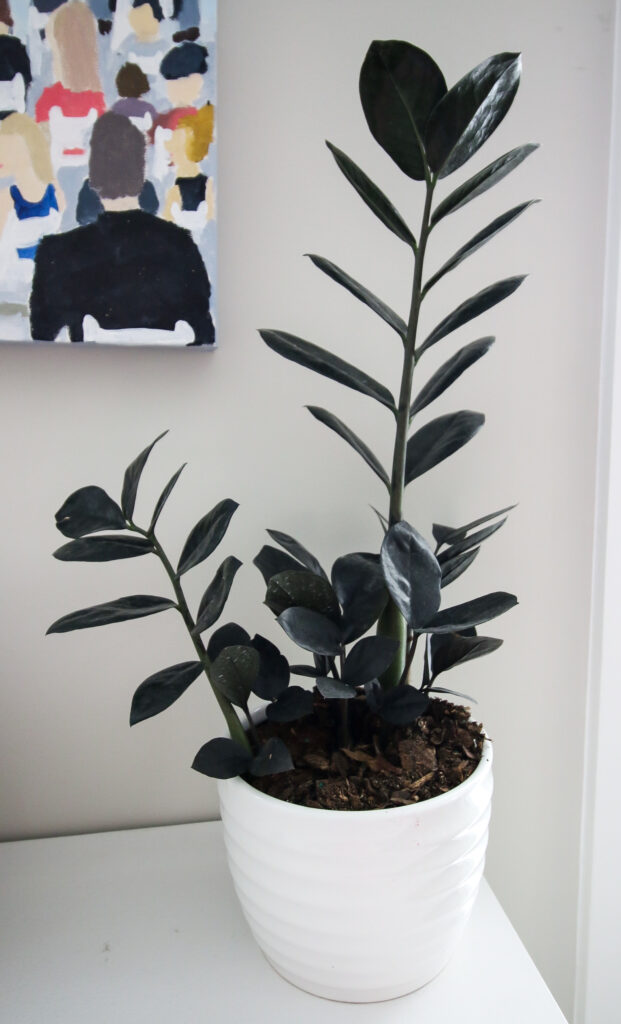
Check your plant for damage
finally, I suggest that you check your ZZ plant for damage. My plant had a whole stem go completely brown and crispy, and it is because it got damaged.
The branch got too heavy and I did not stake it in time and it fell over and bent.
I added a stake at that point but it was too late.
Once these branches get bent, a lot of times, they just slowly die and there's really nothing you can do about it.
Retrospectively, I wish I had obviously either stick that sooner or cut that branch off and propagated it, but by the time I realized what was really happening it was too late.
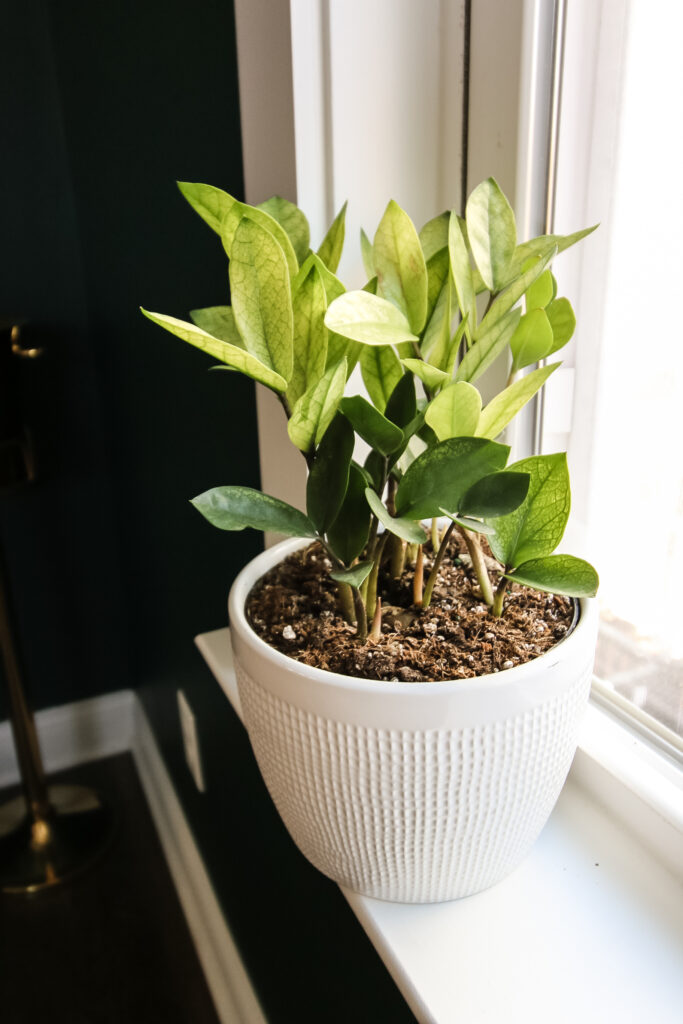
Why does my ZZ plant have brown tips?
Brown tips on the leaves of your ZZ plant are usually a warning sign that something is starting to go wrong but it's not wrong enough for all of the leaves to go completely brown.
Most of the time, this indicates a watering issue.
Dry crispy brown leaf tips indicate that your ZZ plant needs more water. This could be more frequent watering, or it could also be a humidity issue.
Check to see if there is a vent blowing near it. My chameleon ZZ plant got brown spots and it wasn't until then that I realized that event was blowing on it up on its upper shelf.
Luckily, this is an easy problem to fix because all you need to do is move your plant.
Increasing the humidity can also help. You can mist them, run, a humidifier, at a pebble tray, or cluster it with other plants to increase natural humidity.
Any more questions about your ZZ plant?
Thanks for reading!


Hey there, I'm Morgan, a houseplant enthusiast from sunny Charleston, South Carolina. Growing up surrounded by my mom's lush orchids and African violets, I discovered the magic of bringing nature indoors. Thanks to the pandemic, I delved deeper into houseplants, discovering their power to uplift moods and transform spaces. I'm here to spill all my secrets, helping you pick the perfect houseplant - and make it happy. Let's keep your plants alive, together! 😊


